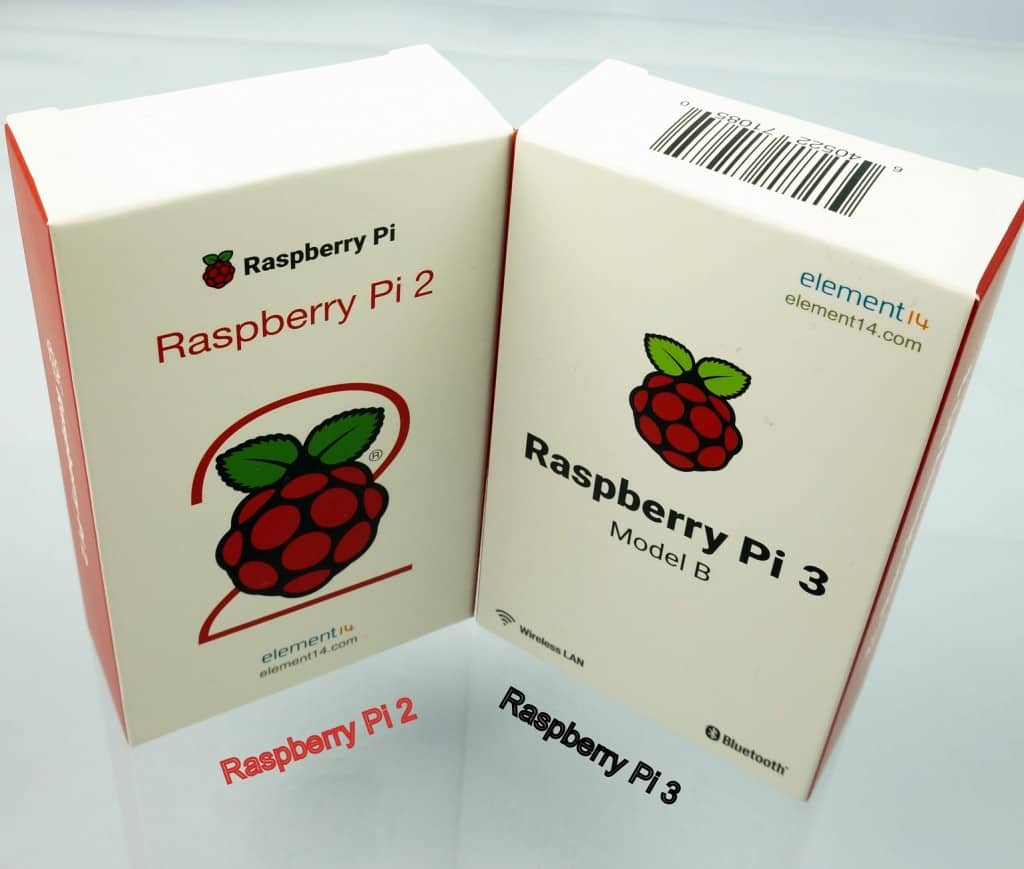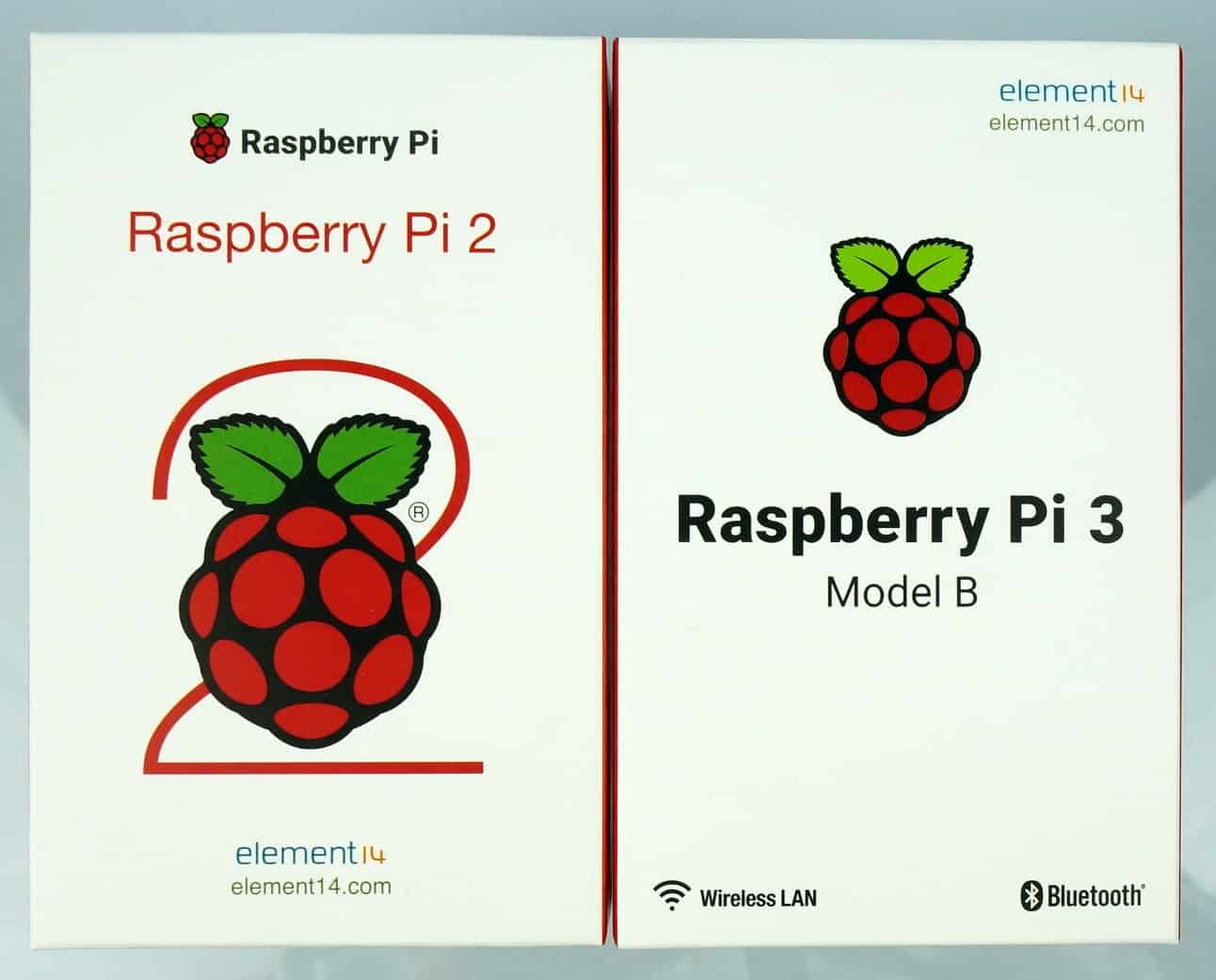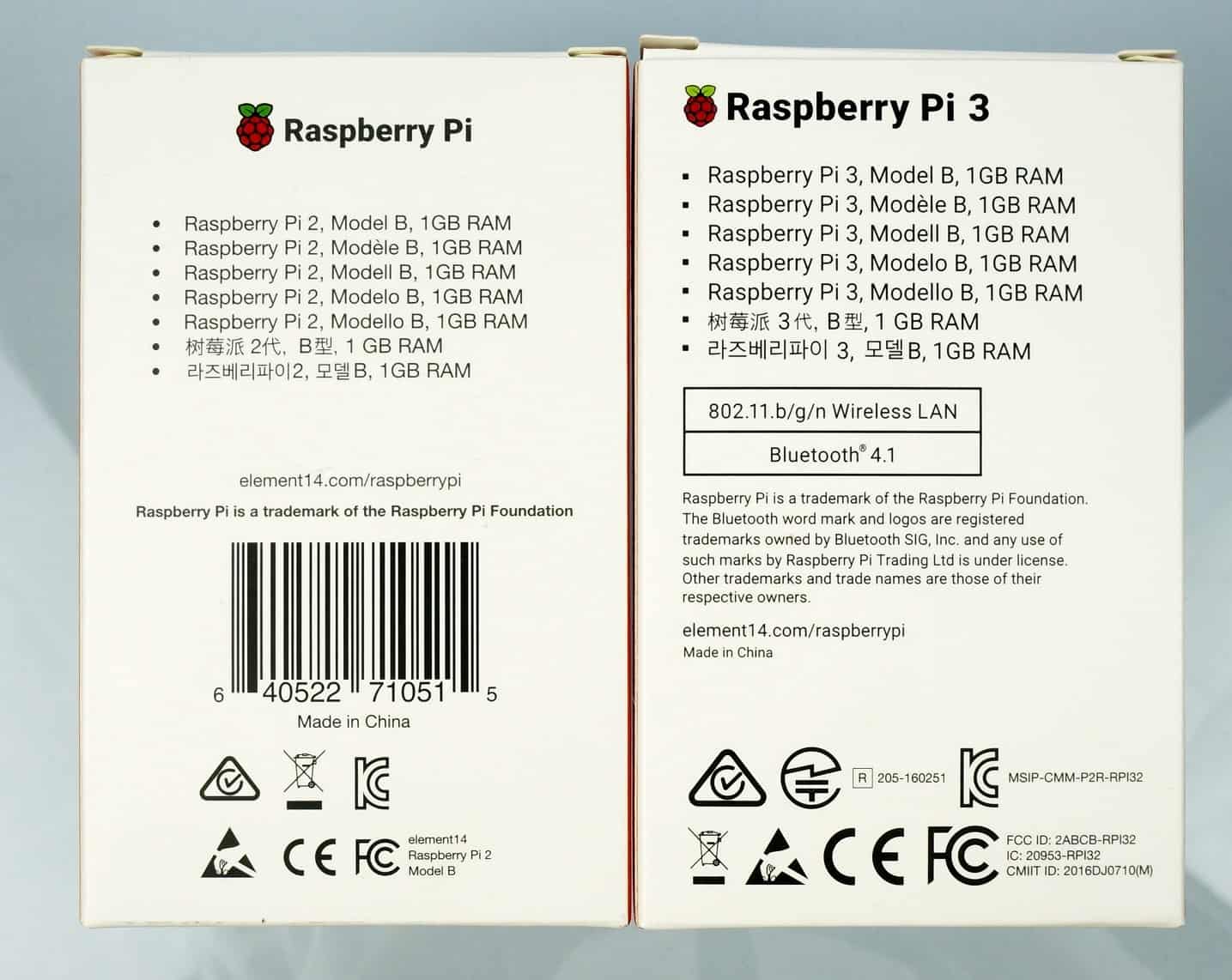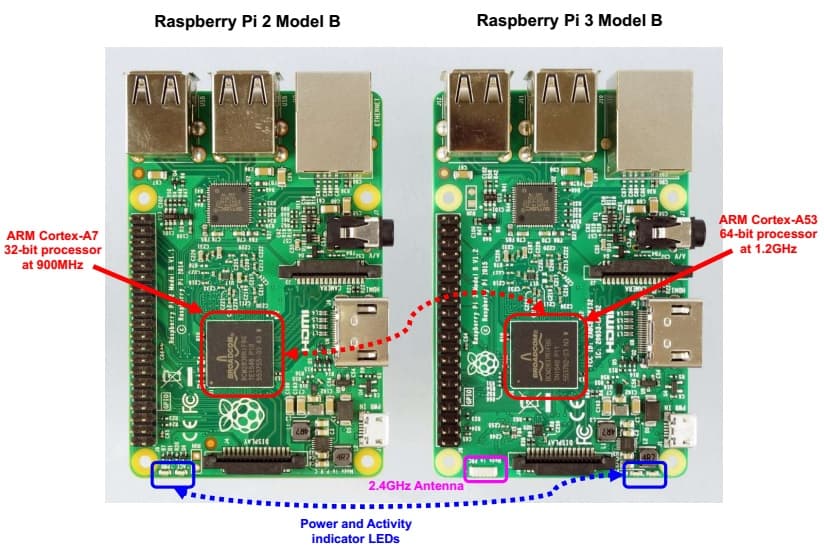Không có sản phẩm trong giỏ hàng!

Super Single Board Computer - Raspberry Pi 3
Raspberry Pi is a Single Board Computer, released on 29th February 2012 by the Raspberry Pi Foundation. Their aim is to produce a low-cost computer board for education, especially for underdeveloped countries.This year, Raspberry Pi celebrates its 4th birthday (or should we say 1st birthday because 29th February only occurs every 4 years?). Anyway, the Foundation has announced the new model of Raspberry Pi model B, the Raspberry Pi 3 with huge processor upgrades and new features. Let's take a look.

Here is the comparison of the packaging box of Raspberry Pi 2 (left) and Raspberry Pi 3 (Right). It is very obvious which is which! So do not worry that you might get the wrong version of Raspberry Pi.
 Exact front view of the box of Raspberry Pi 2 vs Raspberry Pi 3.
Exact front view of the box of Raspberry Pi 2 vs Raspberry Pi 3.
The back of the packaging box of Raspberry Pi 2 vs Raspberry Pi 3
Specifications: Raspberry Pi 3
- SoC: Broadcom BCM2837
- CPU: 4× ARM Cortex-A53, 1.2GHz
- GPU: Broadcom VideoCore IV
- RAM: 1GB LPDDR2 (900 MHz)
- Networking: 10/100 Ethernet, 2.4GHz 802.11n wireless (WiFi)
- Bluetooth: Bluetooth 4.1 Classic, Bluetooth Low Energy
- Storage: microSD
- GPIO: 40-pin header, populated
- Ports: HDMI, 3.5mm analog audio-video jack, 4× USB 2.0, Ethernet, Camera Serial Interface (CSI), Display Serial Interface (DSI)
It has similar IO interface with Raspberry Pi 2. Dimension is the same, it still remains all the:
- 40 pin IO pin
- microSD card socket (but it is not spring type)
- 4 x USB port
- 1 x Ethernet port
- 1 x HDMI port
- 1 x 3.5 analogue audio-video jack
- 1 x Camera Serial Interface (CSI)
- 1 x Display Serial Interface (DSI)
As the dimension and all other IO interface ports are the same, the Raspberry Pi 2 casing will be compatible with Raspberry Pi 3.
Let's take a look at the improvements
Raspberry Pi 3 received a huge upgrade on processing power. From 32-bit (Rpi 2) to 64-bit (Rpi 3). Besides, Rpi 2 is running at 900MHz, while Rpi 3 is running at 1.2GHz. I believe the 64-bit on Rpi 3 can only be utilized with the operating system, while Raspbian is yet 64-bit operating system (at the time I am writing this), but just looking at the system clock, Rpi 3 will outperform Rpi 2.
There is another small modification on Rpi 3 compared to Rpi 2, the Power LED and Activity LED has been moved to the edge of power input (USB Micro-B socket) on Rpi 3. The reason is to give way the 2.4GHz antenna. There is another huge upgrade on Rpi 3, it is integrated with WiFi and Bluetooth. It uses Broadcom BCM43438 chip that provides 2.4GHz 802.11n wireless LAN, Bluetooth Low Energy, and Bluetooth 4.1 Classic radio. At the time this article is written Raspbian has supported the WiFi, but not the Bluetooth. I believe it is just a matter of time before the Bluetooth is fully supported.
With wireless connection support, Rpi 3 is designed for IoT development. Of course, you can always use it for Internet connection.
If you want to know the upgrades of Raspberry Pi 3 in depth, here are the details from the official Raspberry Pi website:
Raspberry Pi: Benchmark, Spec and More!
 International
International Singapore
Singapore Malaysia
Malaysia Thailand
Thailand Vietnam
Vietnam

